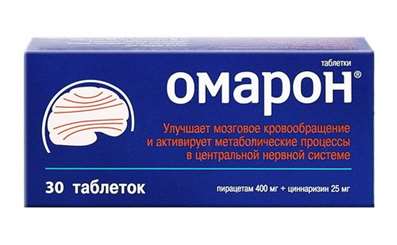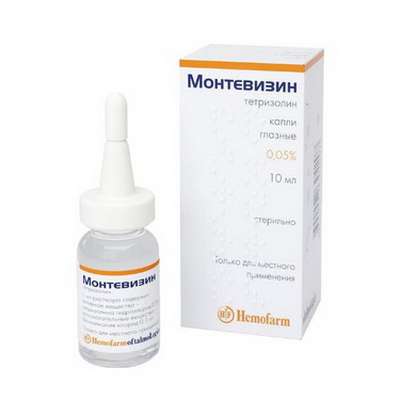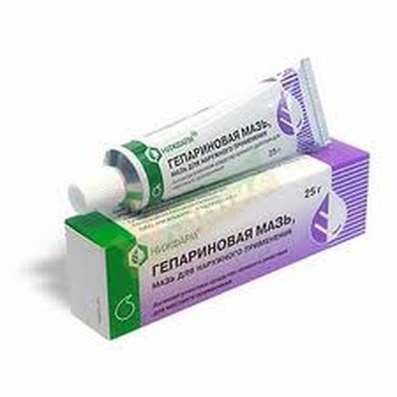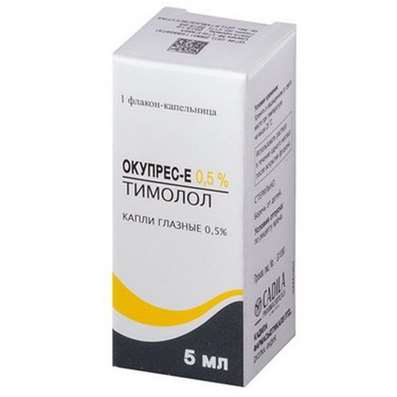Instruction for use: Dextran 40
I want this, give me price
Dosage form: Solution for infusions, substance powder
Active substance: Dextranum 35000-45000
ATX
B05AA05 Dextran
Pharmacological group
Substitutes for plasma and other blood components
The nosological classification (ICD-10)
A05.9 Bacterial food poisoning, unspecified: Bacterial intoxication; Diarrhea with food poisoning; Acute diarrhea, food poisoning; food poisoning; foodborne diseases; toxic diarrhea
A48.3 Toxic shock syndrome: Bacteremic shock; Infectious-toxic shock; Intoxication syndrome; Toxico-infectious shock; Toxic shock; Chronic intoxication in diseases of the digestive tract; Chronic intoxication in gastrointestinal infections; Endotoxin shock
E86 Decreased fluid volume [hypovolaemia]: Water deficit recovery; Indemnification of isotonic deficiency of water; Compensation for isotonic sodium deficiency; Compensation BCC; Replenishment of water deficit with stored KShS; Replenishment of fluid volume; Replenishment of BCC; Replenishment of electrolytes with stored KHS; Hypovolemic conditions; Hypovolemic condition; Hypovolemia; Hypotonic form of hypohydration; Hypochloremia with dehydration; Dehydration of different origin; Dehydration in children; Substitution of plasma volume for blood loss in pediatrics; Substitution of plasma with its losses and burns; Isotonic dehydration; Isotonic form of hypohydration; Violation of the water-salt balance; Dehydration;Dehydration in acute intestinal infections; Acute hypovolemia; Loss of fluid in burns; Toxicosis with exsycosis
H16.9 Keratitis, unspecified: Vesicular keratitis; Deep keratitis without epithelial lesion; Fungal keratitis; Discoid keratitis without damage to the corneal epithelium; Keratitis without epithelial defects; Inflammation of the cornea
H31.9 Vascular system diseases, unspecified: Angiospasm of the choroid; Angiospastic changes in the choroid; Atherosclerotic changes in the retina and choroid; Diseases of the choroid; Change in the mesh and choroid of the eye; Circulatory disturbances in the choroid of the eye; Disturbances of blood supply to the choroid of the eye; Vascular changes in the choroid of the eye; Thrombosis of the arteries of the choroid
H35.3 Macular and posterior pole degeneration: Macular degeneration; Retinal dystrophy; Angiosclerotic maculodystrophy; Age-related macular degeneration; Age-related macular degeneration; Nontranssudative forms of macular degeneration; Degenerative changes of a yellow stain; Stargardt's disease; Degenerative processes in the yellow spot; Retinal degeneration; Macular degeneration; Pigmented degeneration of the retina; Macular degeneration age (senile); Dystrophy of the mesh membrane; Hereditary pigmentary degeneration of the retina; Hereditary taperoteretal degenerations; Older macular degeneration
H35.8 Other specified retinal disorders: cystoid macular edema; Degenerative retinal changes; Senile degeneration of the eye retina; Senile degeneration of the retina
H46 Optic neuritis: Retinitis Leber; Inflammatory optic neuritis of the optic nerve; Strona syndrome; Inflammation of the optic nerve; Papillitis
H91 Other hearing loss: Age-related vascular hearing loss; Age-related vascular drop in hearing; Age-related hearing impairment; Idiopathic hearing loss; Decreased acuity of hearing; Hearing loss; Deteriorating hearing of vascular or toxic origin; Perceptual hearing loss
I63 Cerebral infarction: ischemic Stroke; Ischemic brain disease; Ischemic stroke; Ischemic stroke and its consequences; Ischemic cerebral stroke; Ischemic cerebrovascular accident; Ischemic brain damage; Ischemic brain damage; ischemic conditions; Cerebral ischemia; Acute hypoxia brain; Acute cerebral ischemia; Acute ischemic cerebrovascular accident; Acute cerebral infarction; Acute ischemic stroke; Acute period of ischemic stroke; Focal cerebral ischemia; Ischemic stroke; recurrent stroke; The syndrome of Morgagni-Adams-Stokes; Chronic cerebral ischemia; cerebrovascular stroke; embolic stroke; Ischemic brain damage
I73.0 Raynaud's Syndrome: Raynaud's syndrome Leriche; Raynaud's disease; Raynaud's phenomenon; RaynaudLeriche syndrome; Raynaud's disease; Raynaud's syndrome with trophic disorders; Peripheral angiopathy
I73.8 Other specified peripheral vascular disease: Syndrome of intermittent claudication; endarteritis obliterans; acrocyanosis; vasoconstriction; occlusive disease; Intermittent claudication; Disorders of vascular innervation; Spasm of peripheral arteries; Arterial angiopathy; Venous insufficiency and its complications; Spasm of peripheral vessels; The spasm of coronary vessels; endarteritis; cooling stop; Occlusal disorders of peripheral circulation; Peripheral vascular occlusion
I74.9 Embolism and thrombosis of unspecified arteries: Arterial embolism; Arterial thrombosis; Acute arterial thromboembolism; Acute vascular occlusion; Acute occlusion of arteries; Acute arterial thrombosis; Acute thrombosis; Acute thrombosis of peripheral arteries; Thrombosis; Thrombosis in the extracorporeal circulation; Thrombosis of peripheral arteries; Peripheral vascular thrombosis; Shunttromboz; Embolism; Embolism of peripheral arteries; Occlusive Arterial Disease
I80 Phlebitis and thrombophlebitis: Diseases of peripheral vessels; Inflammation of superficial veins; Inflammatory diseases of veins; Deep venous thrombophlebitis; The disease of veins; Disease of the veins of the lower extremities; Diseases of peripheral vessels; Migrating phlebitis; Insufficiency of veins of lower extremities; Exacerbation of chronic thrombophlebitis; Acute thrombophlebitis; Acute thrombophlebitis of superficial veins; Periphlebitis; Periflebit surface; Superficial inflammation of veins; Surface thrombophlebitis; Surface phlebitis; Thrombophlebitis; Deep vein thrombophlebitis; Thrombophlebitis superficial; Phlebitis; Phlebitis of deep veins; Phlebitis of superficial veins; Phlebopathy; Chronic thrombophlebitis; Endophlebitis
I82.9 Embolism and thrombosis of unspecified vein: Venous embolism; Venous thrombosis; Diseases caused by blood clots in the vessels; Acute vascular occlusion; Acute venous thrombosis; Acute thrombosis of veins; Thrombosis; Thromboembolism; Phlebothrombosis; Embolism
K51.0 Ulcerative (chronic) enterocolitis: Enterocolitis necrotizing; Necrotizing enterocolitis; Necrotizing enterocolitis and enteritis
K56.0 Paralytic ileus: intestinal paresis; Paralytic ileus; Paresis of the stomach and intestines; Paralytic ileus
K65 Peritonitis: Abdominal infection; Intra-abdominal infections; intra-abdominal infections; Diffuse peritonitis; abdominal Infections; Infections of the abdominal cavity; The infection of the abdominal cavity; The infection of the gastrointestinal tract; Spontaneous bacterial peritonitis
K85 Acute pancreatitis: Acute pancreatitis; Pancreatitis; Pancreatitis haemorrhagic; acute Pancreatitis; Sepsis pancreatogenic; Acute necrotizing pancreatitis; edematous pancreatitis
P50 Fetal blood loss from
R02 Gangrene, not elsewhere classified: Atherosclerotic gangrene; Gangrene; Gangrene of the extremities; The fire of Saint Anthony
R57.8.0 * Burn shock: Pain shock for burns; Burn shock
R58 Bleeding, not elsewhere classified: Abdominal apoplexy; Hemorrhagia; Haemorrhage of the esophagus; Hemorrhage; Generalized bleeding; Diffuse bleeding; Diffuse bleeding; Prolonged bleeding; Blood loss; Blood loss during surgical interventions; Bleeding during surgery and in the postoperative period; Bleeding during labor; Bleeding and haemorrhage in hemophilia B; Bleeding from the gums; Bleeding intraoperative abdominal; Bleeding against a background of coumarin anticoagulants; Hepatic hepatitis; Bleeding in hemophilia A; Bleeding at hemophilia A; Bleeding with inhibitory forms of hemophilia A and B; Bleeding due to leukemia; Bleeding in patients with leukemia; Bleeding; Bleeding due to portal hypertension; Bleeding due to hyperfibrinolysis; Drug bleeding; Local bleeding; Local bleeding due to activation of fibrinolysis; Massive blood loss; Acute blood loss; Parenchymal hemorrhage; Hepatic bleeding; Postoperative hemorrhage; Kidney bleeding; Vascular-platelet hemostasis; Traumatic bleeding; Threatening bleeding; Chronic blood loss
T79.1 Fat embolism (traumatic): Fat embolism; fat embolism
T79.3 Post-traumatic wound infection, not elsewhere classified: Inflammation after surgery and trauma; Inflammation after trauma; Secondary infection of skin and mucous membrane damage; Deep Wounds; Purulent wound; Purulent-necrotic phase of wound process; Purulent-septic diseases; Purulent Wounds; Purulent wounds with the presence of deep cavities; Granulating wounds of small size; Disinfection of purulent wounds; Wound infections; Infections wound; Infection of wounds; Infected and non-healing wound; Infected postoperative wound; Infected wound; Infected Skin Wounds; Infected burns; Infected Wounds; Suppurating postoperative wounds; Extensive purulent-necrotic process of soft tissues; Burn infections; Burn infection; Perioperative infection; Poorly healing infected wound; Postoperative and purulent-septic wound; Postoperative wound infection; Wound infection; Wound botulism; Wound infections; Wounds of purulent; Wounds infected; Reinfection of granulating wounds; Sepsis posttraumatic
T79.4 Traumatic shock: Haemorrhagic shock; Crash Syndrome; Posthemorrhagic shock; Postoperative shock; Post-traumatic shock; Post-traumatic shock; Traumatic shock; Syndrome of hemorrhagic shock and encephalopathy
Z100 * CLASS XXII Surgical practice: Abdominal surgery; adenomectomy; Amputation; Coronary angioplasty; Angioplasty of the carotid arteries; Antiseptic skin treatment for wounds; Antiseptic Hand; Appendectomy; atherectomy; Balloon coronary angioplasty; Vaginal hysterectomy; The coronary bypass; Interventions in the vagina and cervix; Interventions on the bladder; Intervention in the mouth; Restoration and reconstructive surgery; Hand hygiene of medical personnel; Gynecologic surgery; Gynecological intervention; Gynecological surgery; Hypovolemic shock during operations; Disinfection of purulent wounds; Disinfection of wounds edges; Diagnostic intervention; Diagnostic procedures; Cervical Diathermocoagulation; Long-surgery; Replacing the fistula catheters; Infection in orthopedic surgery; Artificial heart valve; cystectomy; Short-term outpatient surgery; Short-term operation; Short surgical procedures; Krikotireotomiya; Blood loss during surgery; Bleeding during surgery and in the postoperative period; Kuldotsentez; laser photocoagulation; laser coagulation; retinal laser coagulation; Laparoscopy; Laparoscopy in Gynecology; CSF fistula; Small gynecological operations; Small surgical procedures; Mastectomy and subsequent plastic; mediastinotomy; Microsurgical operations on the ear; Mukogingivalnye operation; suturing; Minor surgery; neurosurgical operation; Immobilization of the eyeball in ophthalmic surgery; testectomy; pancreatectomy; Perikardektomiya; The period of rehabilitation after surgery; The period of convalescence after surgery; Percutaneous transluminal coronary angioplasty; Pleural thoracentesis; Pneumonia postoperative and posttraumatic; Preparation for surgical procedures; Preparation for surgery; Preparation of the surgeon's hands before surgery; Preparation of the colon for surgical procedures; Postoperative aspiration pneumonia in neurosurgical and thoracic surgery; Postoperative nausea; Postoperative bleeding; postoperative granuloma; postoperative shock; The early postoperative period; myocardial revascularization; Radiectomy; gastric Resection; bowel resection; uterine Resection; liver Resection; enterectomy; Resection of part of the stomach; Reocclusion of the operated vessel; Bonding tissues during surgical procedures; Removal of sutures; Condition after eye surgery; Condition after surgery; Condition after surgery in the nasal cavity; Condition after gastrectomy; Status after resection of the small intestine; Condition after tonsillectomy; Condition after removal of the duodenum; Condition after phlebectomy; Vascular surgery; Splenectomy; Sterilization of surgical instruments; Sterilization of surgical instruments; sternotomy; Dental surgery; Dental intervention in periodontal tissues; strumectomy; Tonsillectomy; Thoracic surgery; Thoracic surgery; total gastrectomy; Transdermal intravascular coronary angioplasty; Transurethral resection; Turbinektomiya; Removal of a tooth; cataract surgery; Removal of cysts; tonsillectomy; Removal of fibroids; Removing the mobile primary teeth; Removing polyps; Removing broken tooth; Removal of the uterus body; Removal of sutures; Fistula likvoroprovodyaschih ways; Frontoetmoidogaymorotomiya; Surgical infection; Surgical treatment of chronic limb ulcers; Surgery; The surgery in the anal area; The surgery on the colon; Surgical practice; The surgical procedure; Surgical interventions; Surgery on the gastrointestinal tract; Surgical procedures on the urinary tract; Surgical procedures on the urinary system; Surgical intervention of the genitourinary system; Surgical procedures on the heart; Surgical manipulation; surgery; Surgery on the veins; Surgical intervention; Vascular surgery; Surgical treatment of thrombosis; Surgery; cholecystectomy; Partial gastric resection; hysterectomy; Percutaneous transluminal coronary angioplasty; Percutaneous transluminal angioplasty; Coronary artery bypass; tooth Extirpation; Extirpation of milk teeth; pulpectomy; pulsative cardiopulmonary bypass; tooth Extraction; teeth Extraction; cataract extraction; Electrocoagulation; endourological intervention; episiotomy; Etmoidotomiya; Complications after tooth extraction
Composition
Solution for infusion 1 liter
active substance: Dextran with an average molecular weight of 35,000-45,000 100 g
Auxiliary substances: sodium chloride - 9 g, water for injection - up to 1 l
Description of dosage form
Transparent colorless or slightly yellowish liquid.
Pharmachologic effect
Mode of action - plazmozameshchath.
Pharmacodynamics
Plasma-replacing agent, increases the suspension stability of blood, reduces its viscosity, restores blood flow in small capillaries, normalizes arterial and venous circulation, prevents and reduces the aggregation of blood elements, exerts detoxification effect.
The osmotic mechanism stimulates diuresis (filtered in the glomeruli, creates high oncotic pressure in the primary urine and prevents the reabsorption of water in the tubules), which promotes (and accelerates) the excretion of poisons, toxins, degradation products of metabolism. The expressed vollemic effect positively affects hemodynamics and is simultaneously accompanied by the washing out of metabolic products from the tissues, which together with an increase in diuresis provides an accelerated detoxification of the organism.
Causes a rapid and short-term increase in BCC, resulting in an increase in the return of venous blood to the heart. With vascular insufficiency increases blood pressure, minute blood volume and central venous pressure. Has an average molecular weight of 40,000 Da. With a rapid injection, the plasma volume can be increased by a factor of 2 compared with the volume of the drug administered, Each gram of dextrose polymer with a molecular weight of 30,000-400,000 Da contributes to the redistribution of 20-25 ml of fluid from tissues into the bloodstream.
It is pyrogen-free, non-toxic. Prevents or reduces the aggregation of red blood cells, which improves microcirculation. Reduces the adhesiveness of platelets, prevents the formation of thrombi after surgery and trauma, increases their solubility (due to a change in the structure of fibrin). When administered at a dose of up to 15 ml / kg, there is no noticeable change in bleeding time.
Pharmacokinetics
T1 / 2 - 6 hours. Excretion by the kidneys, in 6 hours 60% are excreted, and in 24 hours - 70%. 30% goes to the reticulo-endothelial system, the liver, where the enzyme is digested with acidic alpha-glucosidase to glucose, but it is not a source of carbohydrate nutrition.
Indications of the drug Dextran 40
Improvement of capillary blood flow and replacement of bcc (paralytic intestinal obstruction, fat embolism, traumatic, burn, hemorrhagic, postoperative and toxic shock (prevention and treatment);
Replacement of plasma volume with blood loss in pediatrics;
Improvement of arterial and venous circulation - thrombosis, thrombophlebitis, obliterating endarteritis, Raynaud's disease, threat of gangrene development, acute stage of stroke;
Detoxification (peritonitis, pancreatitis, ulcerative necrotic enterocolitis, food poisoning, extensive purulent necrotic processes of soft tissues, crash syndrome, inclusion syndrome;
Hemodilution in the preoperative period;
Carrying out therapeutic plasmapheresis with the purpose of replacing the removed volume of plasma;
Prevention of thrombosis on transplants (heart valves, vascular grafts); For addition to a perfusion solution in an artificial circulation apparatus in open heart surgery;
Violation of microcirculation (traumatic or idiopathic hearing loss);
Diseases of the retina and optic nerve (complicated high degree myopia, retinal dystrophy, retinal vascular (venous) pathology, initial retinal atrophy), inflammatory diseases of the cornea and the choroid of the eye.
Contraindications
Hypersensitivity;
Bleeding;
Thrombocytopenia;
Chronic renal failure (anuria);
Decompensated chronic heart failure (danger of pulmonary edema);
Maceration of the skin of the eyelids, abundant mucoid-purulent discharge (electrophoresis is contraindicated).
Pregnancy and breast-feeding
Use with caution in pregnancy and lactation.
Side effects
Allergic reactions (skin rash, anaphylactoid reactions - depression of blood pressure, collapse, oliguria), fever, chills, fever, nausea. Can provoke bleeding, the development of acute renal failure.
Dosing and Administration
IV by stream infusion, by drop infusion, by electrophoresis.
Dosage regimen - an individual is determined by the patient's condition, the value of blood pressure, heart rate, hematocrit.
The dosage and rate of administration should be selected individually, according to the indications and the patient's condition.
In applying the drug is required to conduct bioassays: after a slow introduction of the first 5 drops drug stop transfusions for 3 minutes, then introduce another 30 drops and then stop infusion for 3 min. In the absence of administration of the drug continued reaction. bioassay results must be recorded in the history of the disease.
In case of violation of capillary blood flow (various forms of shock) is introduced into / in the drip-drip or jet, at a dose of 0.5 to 1.5 liters, to stabilize the hemodynamic parameters in the life-supporting level. If necessary, the amount of drug can be increased to 2 liters.
In children with various forms of shock imposed at the rate of 5-10 ml / kg, the dose may be increased if necessary up to 15 ml / kg. It is not recommended to lower the value of the hematocrit below 25%.
In cardiovascular operations administered in / in the drip, immediately before surgery, for 30-60 minutes for adults and children at a dose of 10 ml / kg at the time of surgery for adults - 500 ml for children - 15 ml / kg.
After surgery, the drug is administered / drip (for 60 minutes) for 5-6 days at: adults - 10 ml / kg once, children under 2-3 years - 10 ml / kg one time a day, up to 8 years - 7-10 ml / kg 1-2 times per day, up to 13 years of age - 5.7 ml / kg 1-2 times per day. For children older than 14 years the dose is the same as for adults.
In operations with cardiopulmonary bypass drug is added to the blood at the rate of 10-20 ml / kg of the patient to fill the pump oxygenator.
The concentration of dextran in the perfusion solution should not exceed 3%. Postoperatively, the dose is the same as in case of violation of capillary blood flow.
In order to introduce detoxification / drip in a single dose of 500 to 1250 ml (children - 5.10 ml / kg) for 60-90 min. If necessary, the first day pour additional 500 ml of the drug (drug administration in children during the first day could be repeated at the same dose). In the following days the drug is administered drip, adults - a daily dose of 500 ml for children - a rate of 5-10 ml / kg. Together advantageously introduced crystalloid solutions (Ringer's Ringer-acetate) in an amount to normalize the water and electrolyte balance (especially important in the treatment of dehydrated patients after surgical operations), a drug typically causes an increase in diuresis (decrease in diuresis indicates dehydration patient).
The ophthalmic practice used by electrophoresis which is carried out in conventional manner. Consumption of products per procedure is 10 ml. The procedure is performed 1 time per day, administered both the positive and negative poles. The current density - up to 1.5 mA / cm2. Duration of treatment - 15-20 minutes. The treatment course consists of 5-10 procedures.
Overdose
Treatment: in case of excessive injection of the drug solution, the patient's condition is carefully assessed and appropriate symptomatic treatment is prescribed.
Precautions measures
Together with a drug useful to administer crystalloid solutions (0.9% sodium chloride solution, 5% dextrose solution) in an amount to fill and maintain fluid and electrolyte balance. This is particularly important in the treatment of patients and dehydrated after severe surgery. While the use of anticoagulation is necessary to decrease their doses. It causes an increase in urine output (if there is a decrease in urine output with the release of a viscous syrup urine, it may indicate dehydration). In this case, you must enter the I / colloidal solutions for filling and maintaining water and electrolyte balance. In case of a need to enter oliguria saline and furosemide.
In patients with reduced kidney filtration capacity is necessary to limit the introduction of sodium chloride.
Dextran are able to encapsulate the surface of red blood cells, preventing the determination of blood groups, so it is necessary to use washed red blood cells.
Special instructions
Effect of the drug on the ability to drive vehicles, mechanisms. Given the mechanism of pharmacological action of the drug, its direct impact on the ability to manage vehicles, mechanisms seems extremely unlikely. However, the side effects associated with use in susceptible people can affect the ability to drive or work with machinery.
Release form
Solution for infusions 10%. For 250, 500 ml in bottles of PE. Each bottle is placed in a pack of a cardboard or transparent bag of PE film.
10, 15, 18, 20, 24 bottles without bundles or bags are placed in a box of corrugated cardboard (for hospitals).
Manufacturer
Producer / organization accepting claims: CJSC "IST-PHARM".
Russia, 692525, Ussuriisk.
Conditions of supply of pharmacies
On prescription.
Storage conditions of the drug Dextran 40
In a dry place at a temperature of 10-25 ° C. (Allowed to freeze during transport).
Keep out of the reach of children.
The shelf life of the drug Dextran 40
2 years.
Do not use beyond the expiration date printed on the package.

 Cart
Cart





